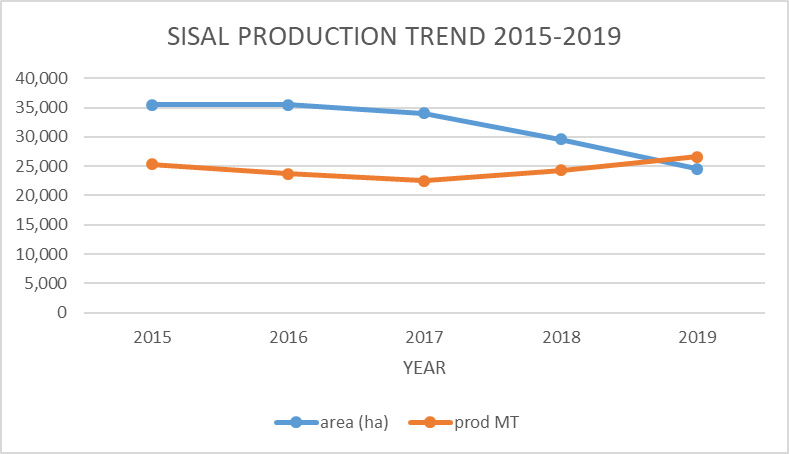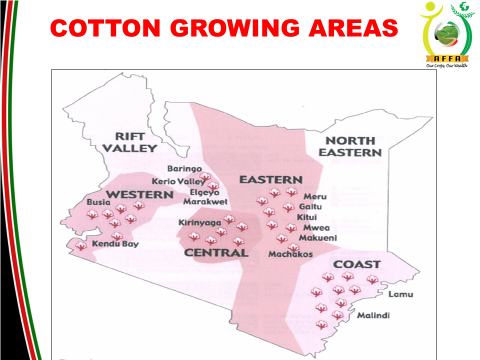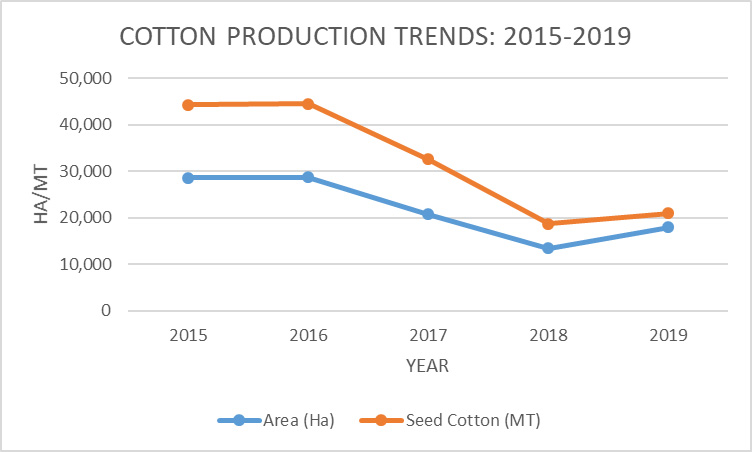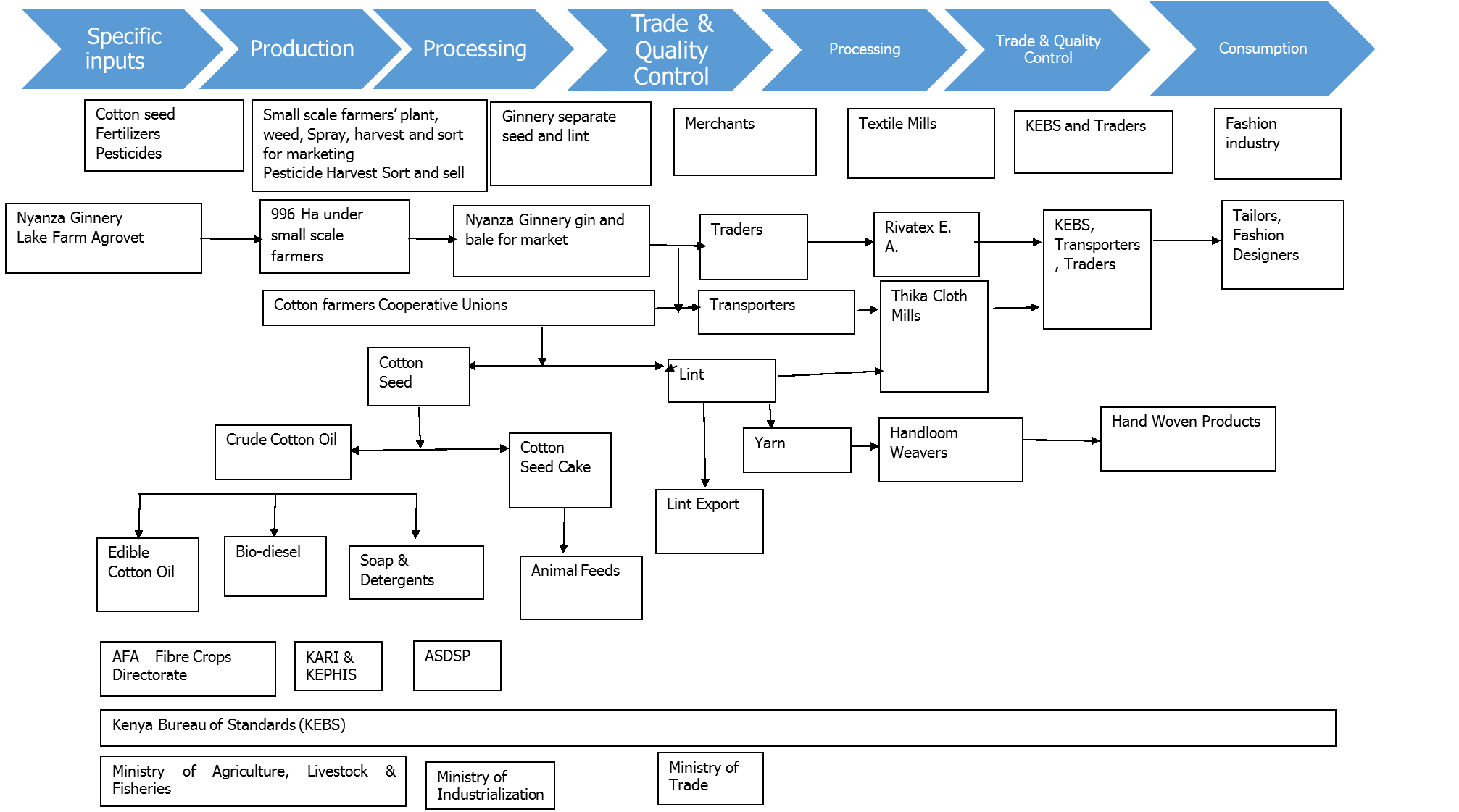Cotton and Sisal are the main fibre crops grown in Kenya. Both are drought tolerant crops grown in the Arid and semi-Arid lands(ASALs) and have the potential to reduce poverty, food insecurity and unemployment. Many Kenyans benefit from the fibre crop directly as processors, traders, transporters and input suppliers.
Sisal
History of sisal in Kenya
Sisal growing and processing industry in Kenya can be traced back to 1914, when the first sisal growing firm was established in Thika. The industry grew by leaps and bounds in the first 50 years characterized by a rapid increase in acreage and quantity of sisal exported. The increase in sisal production led to the establishment of a spinning factory in Juja and a sisal research station in Thika.
The invention of cheaper synthetic fibers in the 1940’s, can be marked as a major drawback for the world sisal production, since, it led to reduced sisal demand. However, demand for sisal globally has increased tremendously since 1990’s with the global aware of use of sisal in environmental conservation as well as increased utilization of sisal fibre in building and construction industries in West African and Middle East countries
Growing areas
- Sisal is a drought tolerant crops grown in the Arid and Semi-Arid Lands in Kenya (ASALs) where food crops do not perform well thereby acting as important food security.
- Sisal is mainly grown as a plantation crop with the estates producing over 80% of the total production. The estates are located in Kilifi, Makueni, TaitaTaveta, Baringo and Nakuru Counties.
- Smallholder sisal farming is spread countrywide with a concentration at:
- Eastern region - Machakos, Makueni and Kitui
- Nyanza region - Homa Bay Migori and Siaya
- Rift Valley - around plantation farms in Migotiyo area in Baringo County
- Coast region - in Kilifi County.
Production
Sisal is mainly grown as a plantation crop with the estates producing over 80% of the total production. There are ten sisal plantations with an area of 24,583 (Ha) in 2019.
Smallholder sisal is mostly grown as a boundary crop and along contours as hedge rows for soil conservation. Most of it is not grown for harvesting. However, as a result of improved incomes from the crop, farmers have started planting it as a stand-alone crop in their farms. Area under this crop is estimated at 2,500 acres.
Over 90 % of sisal produced in Kenya is exported to various destinations in the world and the rest is sold to the local cordage and cottage industries.
Socio-economic importance
Sisal is grown in areas that have high prevalence of poverty. It is an important source of income generation and employment creation.
Sisal sub sector support approximately 30,000 farmers with a potential to support 150,000 farmers.
In 2019 sisal contributed Ksh 3.72 billion to the Kenyan economy
Structure of sisal crop value chain
Sisal production
- Sisal processing – decortication, cleaning, drying, brushing, grading and baling
- Spinning
- Weaving
- Peripheral industries (animal feed, bio-energy production, geo-textiles, specialty papers, dartboards etc.)
Production trends
Kenya is the third highest producer of sisal in the world after Brazil and Tanzania.
- Average sisal production for the last five years stands at 24,461 MT.
- Area under sisal in year 2018 was 29,000 ha
- Yields per Hectare are low i.e. 0.5 to 1.0MT/ ha against a potential of 2.5 to 5.0 Mt/ha




